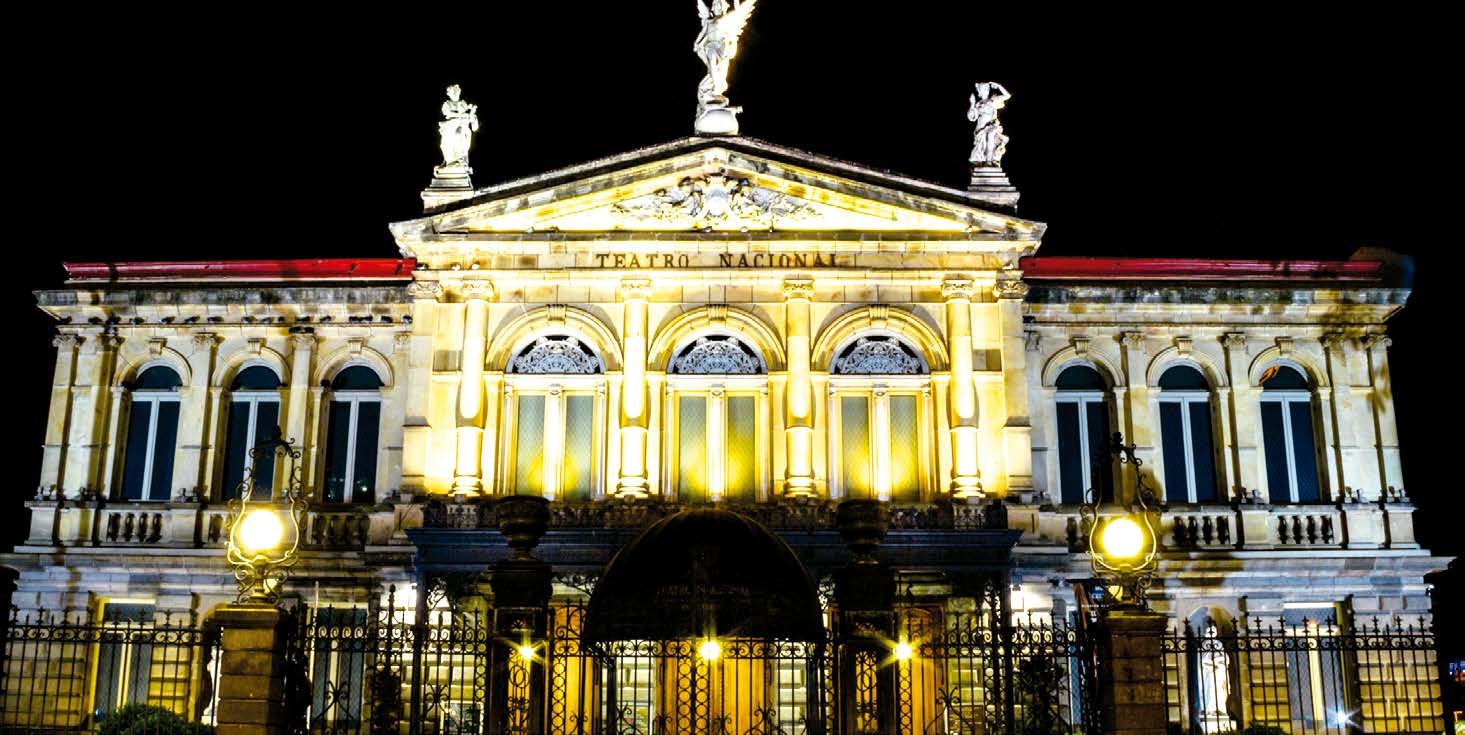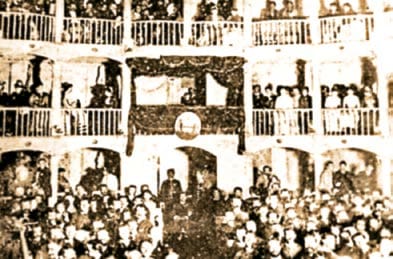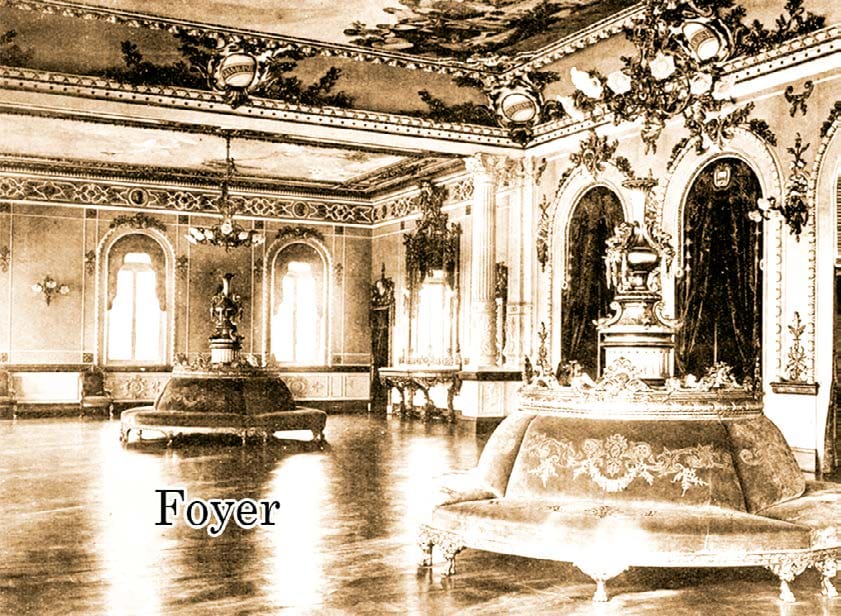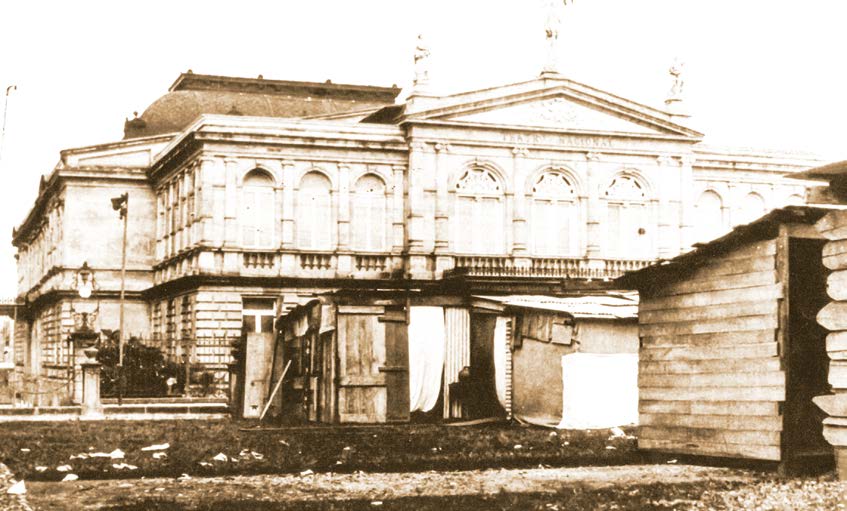
Building A Masterpiece – The National Theater
The National Theater of Costa Rica is the country’s principal theater, located in downtown San José next to Juan Mora Fernández Park. Its construction was authorized on May 28, 1890, when San José had just 20,000 inhabitants.
In the colonial period between 1577 and independence in 1821, there was very little artistic or theatrical activity in Costa Rica because of widespread poverty and the opposition of the Catholic Church. After 1821, plays had to be held outdoors or in private venues, with all-male casts. Most plays were religious in nature.
In 1837 the first Theater of San José was built in a hall with a straw roof and a capacity of 70 people, who had to bring their own chairs. In 1846 another theater was built, a wooden building with a tile roof with a capacity of 200. Its inaugural performance caused a scandal because one of the actors was a woman.
In the first decades of the 19th century, Costa Rica entered a promising economic period when it began exporting coffee, at first to Panama and then to Chile and Europe. A growing number of young people were educated in Europe, and the country began to open itself up to new ideas about the dramatic arts.
In 1847, plans were made to build a national theater financed by private stockholders, as the government lacked the money. In 1850, the Mora Theater (later Municipal Theater) was built and served for many years as Costa Rica’s primary venue for the dramatic arts, but it deteriorated over the years and was finally destroyed by an earthquake in 1888.
Prestigious international touring groups began passing Costa Rica by for want of a national theater. In 1890, a group of citizens proposed a tax on coffee exports to finance a new theater. The tax was approved and a law was passed that same year authorizing construction of a spectacular new National Theater for Costa Rica. The ground-breaking was in 1891.
Several pieces of the theater were built in Belgium, including the cupola, metal structures and a mechanism for raising the stage. There were rumors that the theater was designed in Europe, but it was designed in Costa Rica by local architects and engineers educated in Europe, as well as by foreign professionals who lived here.
By 1894, criticisms of the theater began to appear in the press because of various problems, especially with the stage and the private box seats. There were also serious problems with the cement foundation, and the engineer in charge of the project ultimately resigned. But comments were not all negative, as observers recognized the richness of the materials used and the opulent design, which was unprecedented in this country.
The original plans, of Italian inspiration, were modified during construction to introduce French characteristics. A marble worker of Italian extraction designed the stairways, pedestals, balustrades, statues and columns. Walls were made of stone and granite quarried in Cartago, as well as bricks. Fine wood used on the project came mostly from Alajuela.
Experts say that while the building has a 19th-century German neoclassical style, it boasts an eclectic variety of designs, which was common in Europe and Latin America at that time. With regard to its columns, windows and balconies, it resembles Italian Renaissance palaces. In its interior spaces, French influence can be found in its stairways, and the foyer is a hybrid of Italian and French styles, with décor inspired by classical Greek and Roman art.
The theater was completed in 1897, and there was much debate about what its inaugural production would be. Finally, a French company was selected to perform the opera “Faust” on Oct. 21, 1897.
There was such a crowd outside that police had to keep people at bay, and President Rafael Yglesias shrugged off rumors of an assassination plot and walked to the theater, applauded by the crowds.
The affair lasted until midnight, with much champagne flowing between acts. The next day the press extolled the talent of the opera company and the beauty of the National Theater.
A passion for historical photos Photos are provided courtesy of José Gerardo Suárez Monge, author of “San José: 280 Years of History.” Suárez is a professional photographer and graphic designer with a degree in electrical engineering from the Tecnológico in Cartago, but his passion is collecting and analyzing historical photos — he has over 14,000. He has six books for sale, which are available at Librería Lehmann and the University of Costa Rica bookstore, or by calling 7062-3086 or 8794-7679.





